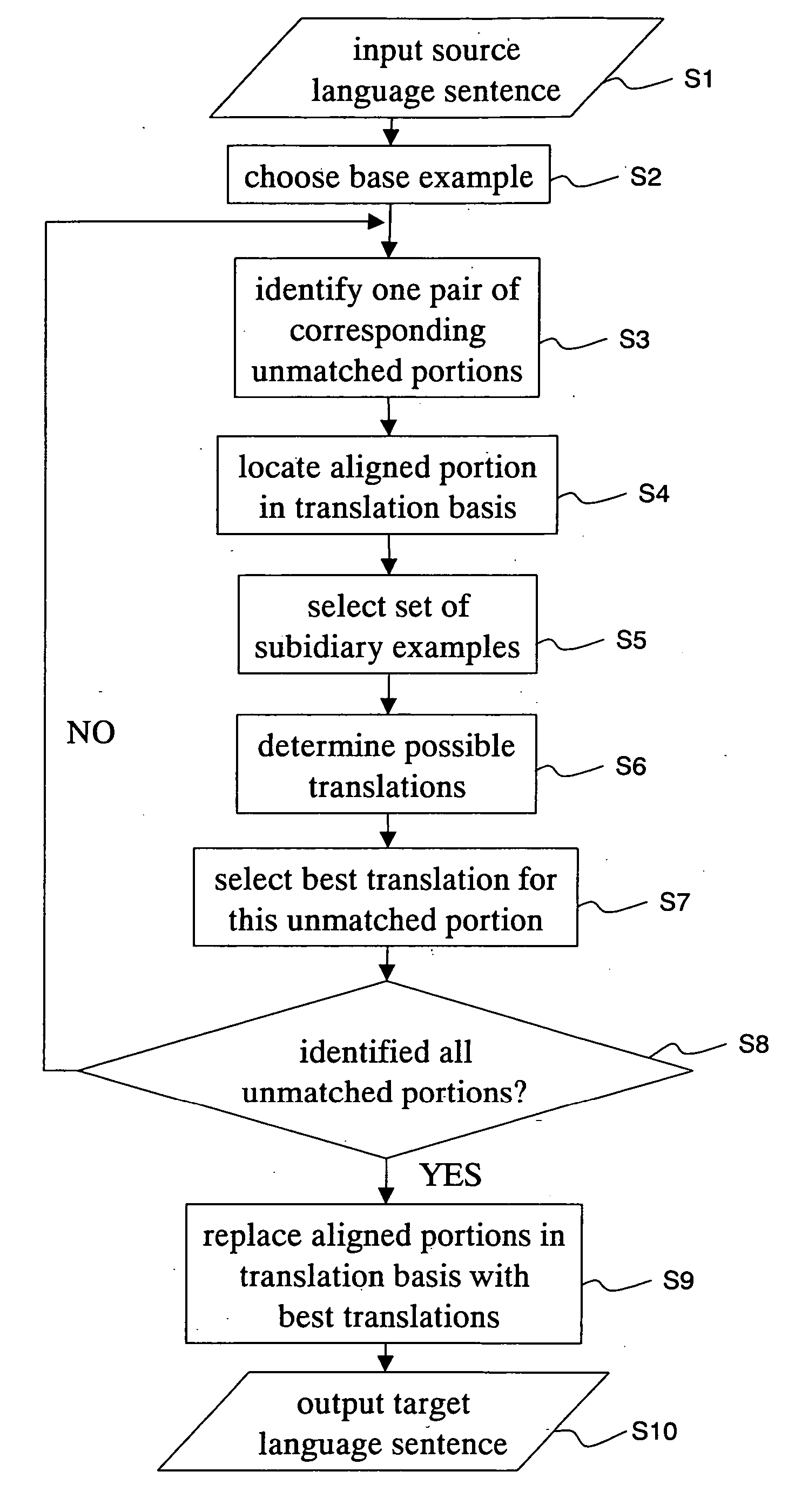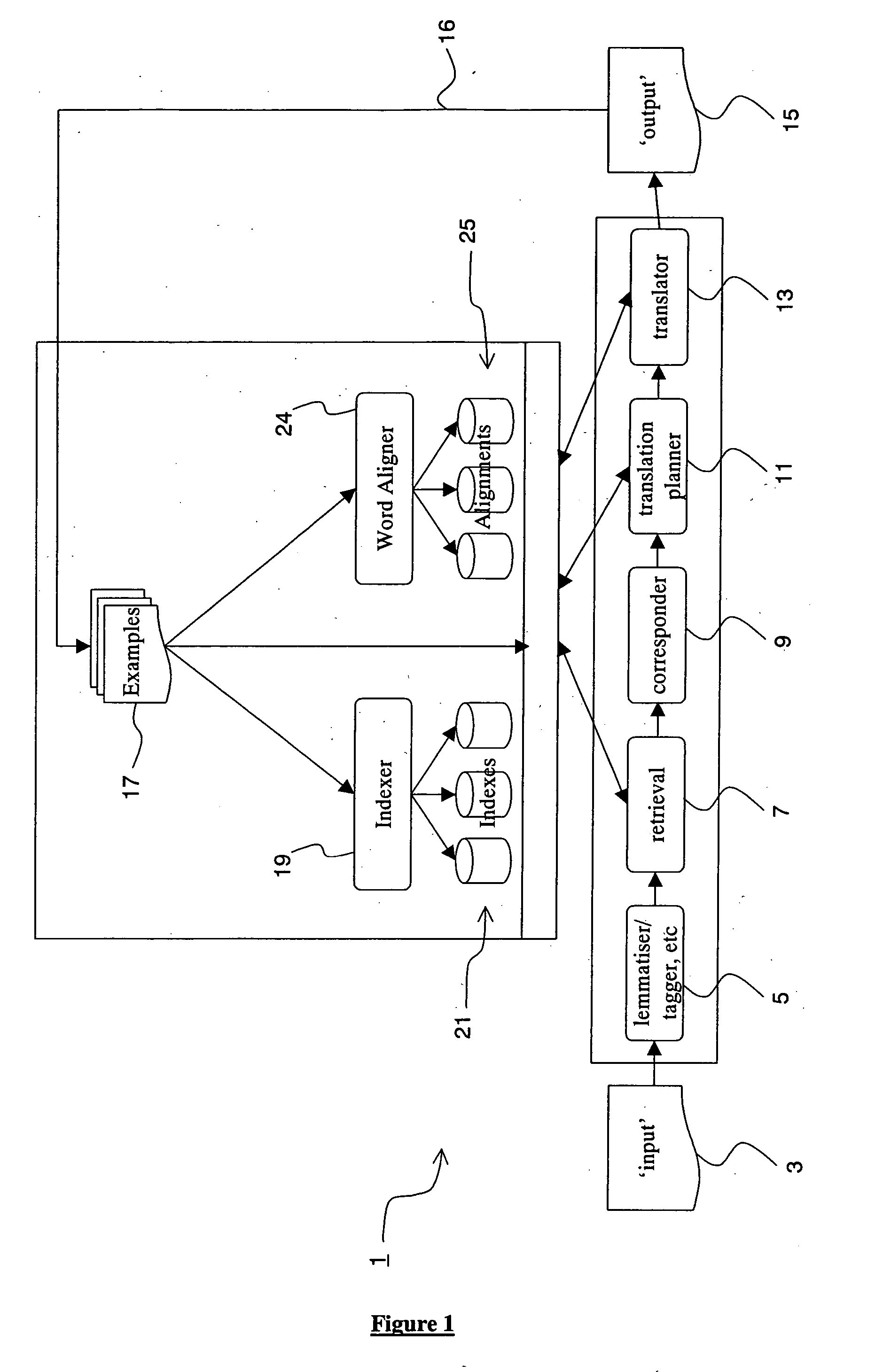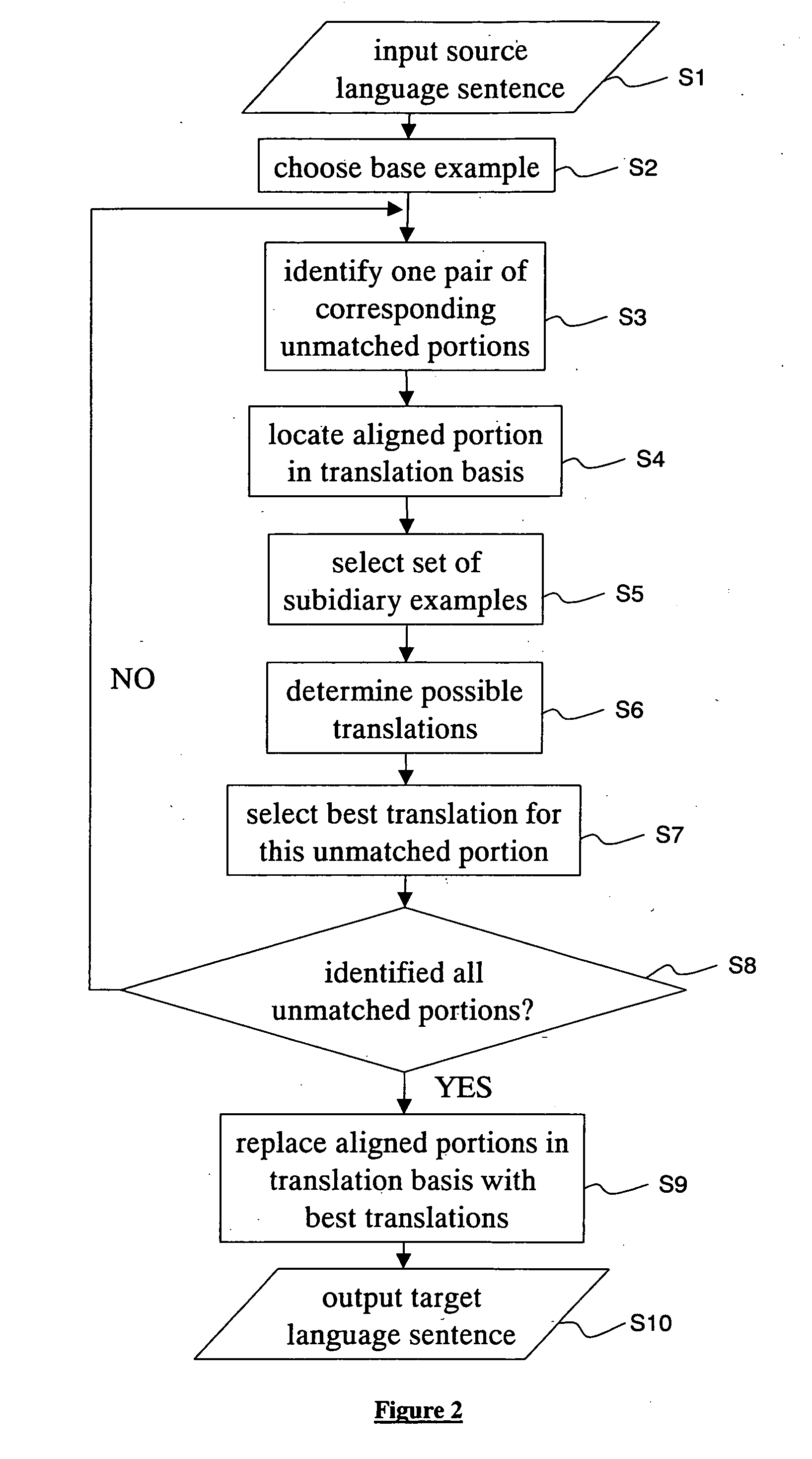Method and apparatus for translation based on a repository of existing translations
a technology of existing translations and methods, applied in the field of methods and apparatus for translation based on existing translations, can solve the problems of limited coverage of elements, limited coverage of “placeables”, and high accuracy of translation memory systems,
- Summary
- Abstract
- Description
- Claims
- Application Information
AI Technical Summary
Benefits of technology
Problems solved by technology
Method used
Image
Examples
Embodiment Construction
[0053] A method and apparatus embodying the present invention for translating an input sentence in a source language to an output sentence in a target language will now be described. FIG. 1 is a schematic diagram illustrating the module structure of a translation apparatus 1 embodying the present invention, and FIG. 2 is a flowchart showing the steps performed by the translation apparatus 1 in this embodiment.
[0054] The translation apparatus 1 comprises an input portion 3 for receiving the input sentence in the source language and an output portion 15 for outputting the translated output sentence in the target language. As will be explained below, translation is performed with reference to a store 17 comprising a plurality of example sentences in the source language each paired with its translation in the target language. The translation apparatus 1 also comprises a lemmatiser / tagger portion 5, a retrieval portion 7, a corresponder portion 9, a translation planner portion 11 and a ...
PUM
 Login to View More
Login to View More Abstract
Description
Claims
Application Information
 Login to View More
Login to View More - R&D
- Intellectual Property
- Life Sciences
- Materials
- Tech Scout
- Unparalleled Data Quality
- Higher Quality Content
- 60% Fewer Hallucinations
Browse by: Latest US Patents, China's latest patents, Technical Efficacy Thesaurus, Application Domain, Technology Topic, Popular Technical Reports.
© 2025 PatSnap. All rights reserved.Legal|Privacy policy|Modern Slavery Act Transparency Statement|Sitemap|About US| Contact US: help@patsnap.com



